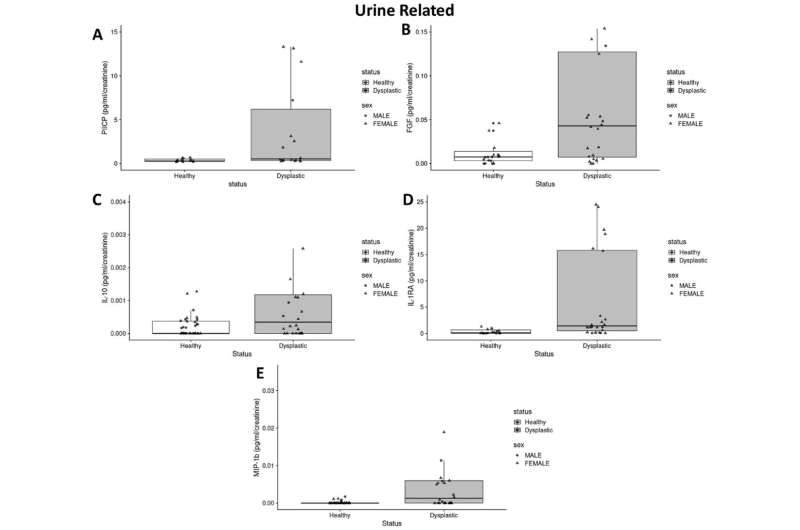This article has been reviewed according to Science X's editorial process and policies. Editors have highlighted the following attributes while ensuring the content's credibility:
fact-checked
trusted source
proofread
Researchers unlock predictive biomarkers for common hip disorder

Researchers from the University of Missouri School of Medicine have developed panels of protein biomarkers present in teens and young adults that distinguish individuals with healthy hips from those with developmental dysplasia of the hip, also known as hip dysplasia, which often progresses to hip osteoarthritis if not recognized before early adulthood.
The researchers tested standard blood and urine samples for the presence of targeted protein biomarkers and discovered that specific protein combinations were consistently different between patients with hip dysplasia when compared to age-matched individuals with healthy hips. Clinical application of these tests could enable early and accurate diagnosis for this common hip ailment.
This would be a major improvement over current diagnostic methods and allow for implementation of optimal prevention and treatment strategies that could help some patients avoid hip replacement surgery later in life.
"The results from this study suggest that these biomarker panels could be further developed into routine lab tests that help physicians accurately identify patients with hip dysplasia so that nonsurgical and surgical joint preservation treatments can be implemented when they are most effective," said senior author James Cook, DVM, Ph.D., William & Kathryn Allen Distinguished Chair in Orthopaedic Surgery and director of the Thompson Laboratory for Regenerative Orthopaedics.
"Further optimization of these biomarker panels could result in highly effective tools that significantly decrease the number of patients who suffer from debilitating hip osteoarthritis as they age."
The researchers collected blood and urine samples from 13-to-34-year-old patients with physician confirmed developmental dysplasia of the hip along with a control group of 13-to 34-year-old volunteers with healthy hips. Panels including serum and urine biomarkers differentiated the two groups with high degrees of sensitivity and specificity.
The biomarker differences between the two groups suggest that hips with developmental dysplasia before the onset of osteoarthritis of the hip are mechanistically distinct from healthy hips in terms of inflammatory and joint remodeling processes that typically lead to osteoarthritis if left untreated.
Osteoarthritis is the primary reason that patients opt for total hip replacement surgery.
"The potential to screen young individuals at-risk for hip problems could aid nonsurgical treatment interventions earlier in life rather than developing arthritis," said Brett Crist, MD, professor of Orthopaedic Surgery.
"Based upon the ease of sample collection, this panel could be readily incorporated into clinical practice as a screening tool for future risk of hip problems."
The study is published in the journal CARTILAGE.
More information: Preston N. Wolfe et al, Evaluation of Serum and Urine Biomarker Panels for Developmental Dysplasia of the Hip Prior to Onset of Secondary Osteoarthritis, CARTILAGE (2023). DOI: 10.1177/19476035231163032

















